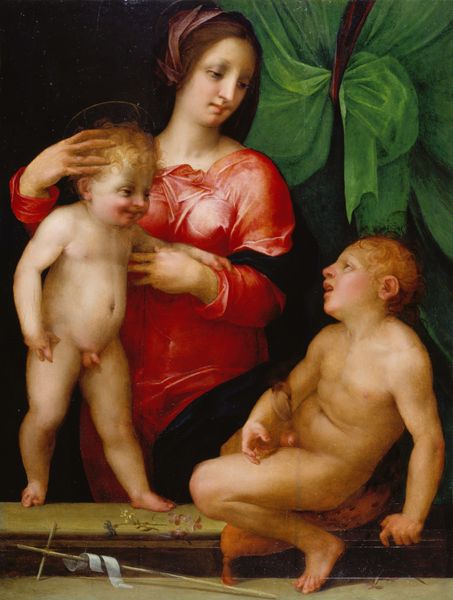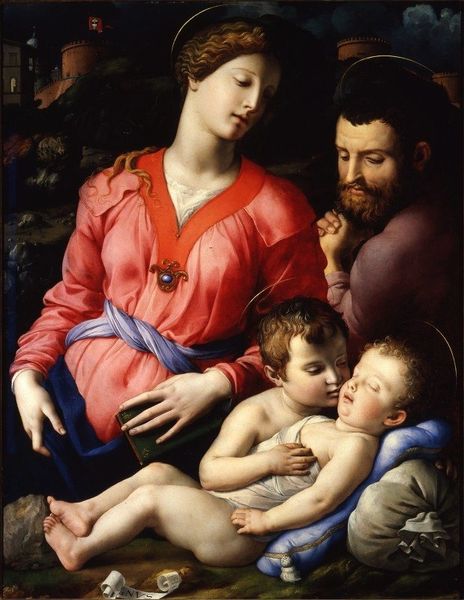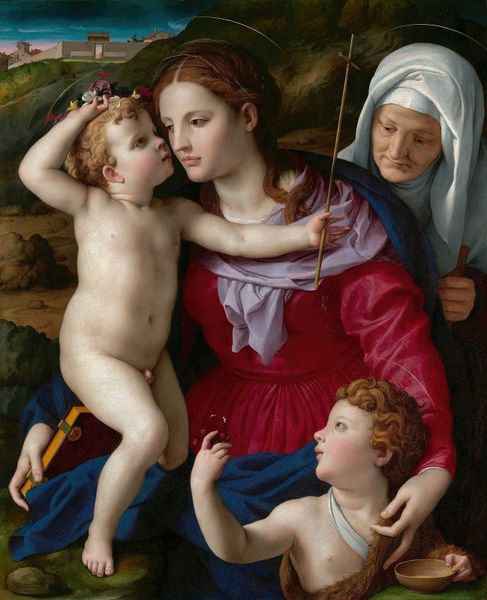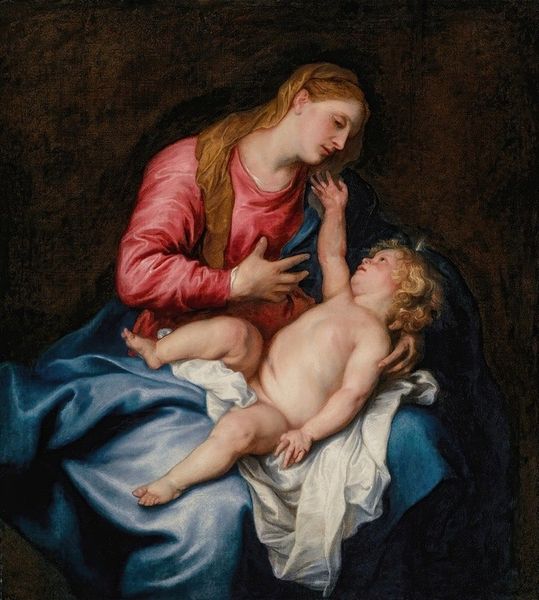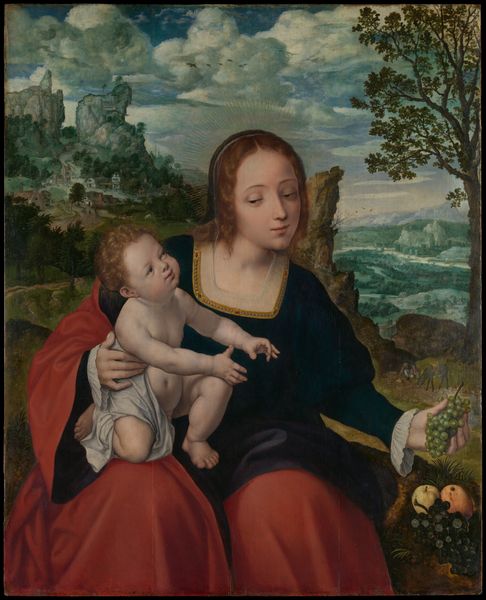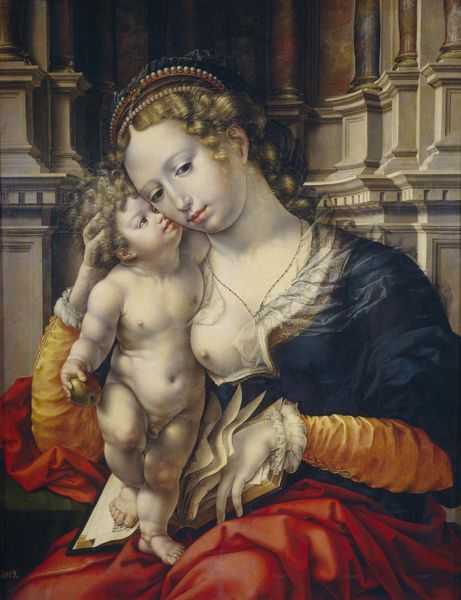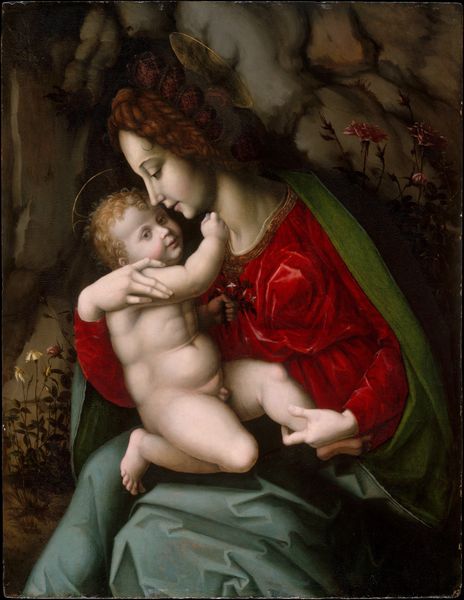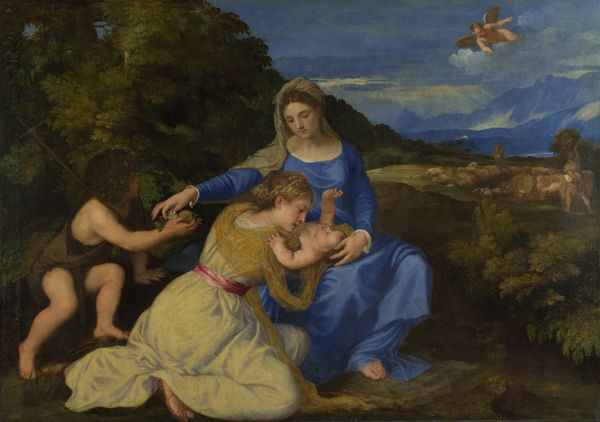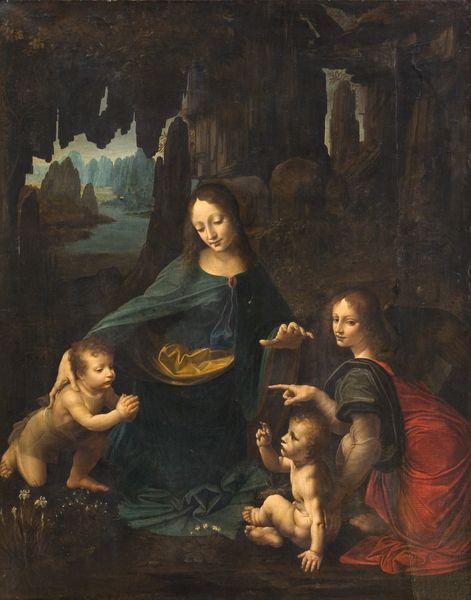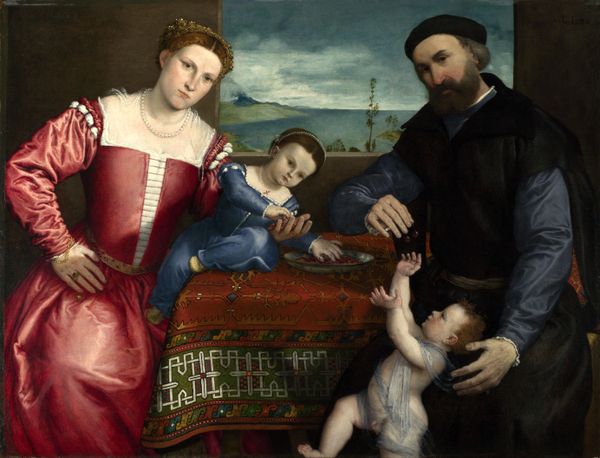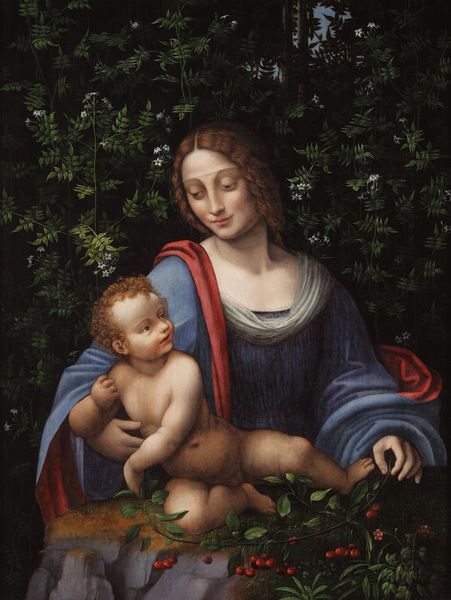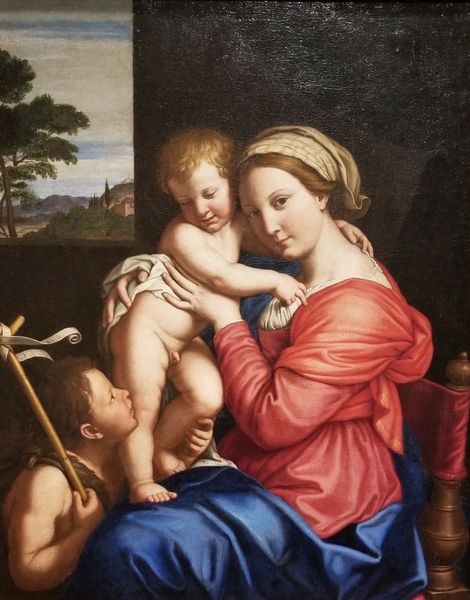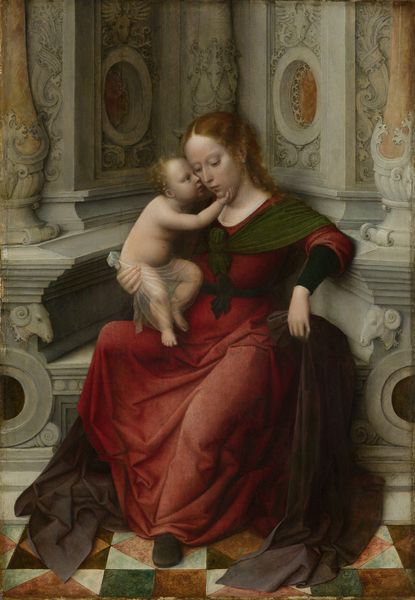
painting, oil-paint
#
portrait
#
allegory
#
painting
#
oil-paint
#
mannerism
#
history-painting
#
italian-renaissance
Copyright: Public domain
Editor: This is Alessandro Allori's "Allegory of the Christian Church," painted around 1600 using oil. The woman's gaze is striking, almost confrontational. What do you see in this piece beyond the immediate subject matter? Curator: The gaze certainly commands attention. But consider how the painting acts as a visual language. Notice the child, likely representing Christ, reaching towards the woman’s floral crown. Think of the weight flowers carried then. Editor: Weight? Like funereal or romantic connotations? Curator: Both! But also triumph, fertility, ephemeral beauty – powerful symbols. The city in the background is almost heavenly in its appearance and may imply "The New Jerusalem." Doesn't it seem to suggest the promise held by the Church? Editor: Ah, the city as the ultimate goal…it gives context to her assured expression. I hadn’t considered the loaded symbolism of each component. Curator: Exactly. Allori constructs an argument through recognizable symbols. We, even today, decode them, often unconsciously drawing on cultural memory. Think about the weight we give religious images; what continuities do you notice? Editor: It’s interesting how Allori uses this visual language to convey religious messages, echoing throughout history, right into our current understanding. This piece makes me wonder how current imagery will hold up. Curator: Precisely. Images, carefully chosen, hold cultural memory. It's like the painting encodes a message to be read and re-read across time.
Comments
No comments
Be the first to comment and join the conversation on the ultimate creative platform.

